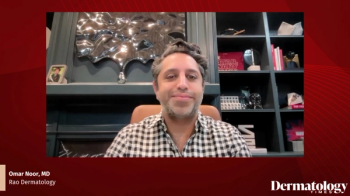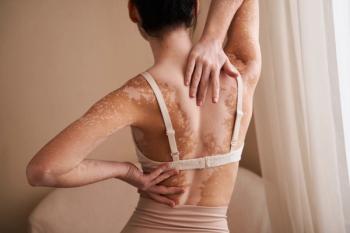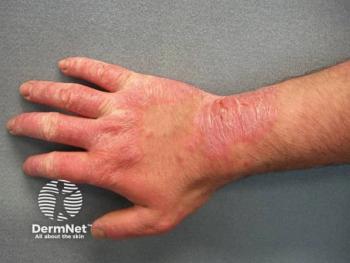
Celebrating Rosacea Awareness Month 2025 with Dermatology Times
Key Takeaways
- Oxymetazoline 1% cream effectively reduces erythema in rosacea patients, particularly those with darker skin tones, by targeting α1A adrenoceptors.
- Heparin sodium allantoin gel shows promise in treating papulopustular rosacea, improving skin hydration and reducing symptoms over 12 weeks.
Explore the latest insights, strategies, and treatments for patients with rosacea as Dermatology Times looks back on Rosacea Awareness Month.
April is Rosacea Awareness Month, a period of time dedicated to raising awareness about the chronic skin condition that affects approximately 16 million Americans and 45 million worldwide, according to the
Dermatology Times invites you to join us in advancing understanding, promoting dialogue, and ultimately improving outcomes for individuals living with rosacea, not just this month but all year round. From emerging therapies and new products to treatment gaps and future goals, below is a collection of pieces from this month dedicated to rosacea management.
Oxymetazoline 1% Cream Reduces Erythema in Patients with Rosacea
Oxymetazoline 1% cream was tested for mild to moderate rosacea-associated erythema on the face. After 4 weeks, the topical effectively decreased redness, stratum corneum hydration, telangiectasia, and vessel diameter in patients with darker skin tones. Oxymetazoline hydrochloride is an α1A adrenoceptor agonist that was approved by the US Food and Drug Administration in 2017.
Choosing the Correct Skin Care for Rosacea with skinbetter science and Zoe Diana Draelos, MD
“Everybody needs to wash their face, use a moisturizer, and use sunscreen,” Zoe Diana Draelos, MD, said, “But because people with rosacea have sensitive skin, they need to be more judicious in their selection of skincare products.”
In a recent interview to celebrate April’s Rosacea Awareness Month, Draelos, consulting professor at Duke University School of Medicine, founder of Dermatology Consulting Services, PLLC, and Dermatology Times’ editor in chief emeritus, discussed the significance of this month.
Rosacea: Progress, Challenges, and the Road Ahead
“We haven’t even gotten close to the kind of genetic phenotyping we see in psoriasis and atopic dermatitis. There is still a lot to learn,” said James Del Rosso, DO, in a recent interview with Dermatology Times on the state of rosacea research. While the exact cause of rosacea remains elusive, advancements in research have significantly improved our understanding of the disease, leading to better management strategies. Experts such as Del Rosso and Zoe Diana Draelos, MD, have contributed extensively to this field, offering insights into emerging therapies, treatment gaps, and the evolving perspective on rosacea pathophysiology.
Compound Heparin Sodium Allantoin Gel Can Treat Rosacea and Improve Skin Barrier
A new study found that topical compound heparin sodium allantoin gel is effective and safe for papulopustular rosacea treatment. After 12 weeks of therapy, patients saw improvements in hydration, transepidermal water loss, erythema, itching, burning, and quality of life.
Treating Rosacea and Other Concerns with Generative Skin’s Ingredient Library
Understanding the Role of the Microbiome in Rosacea
Creating public awareness about rosacea is essential for medical providers, especially in understanding the psychosocial impact it can have on individuals. Clinicians play a crucial and empowering role in educating patients, particularly those newly diagnosed, about their condition and how to manage it effectively. This proactive approach can prevent the condition from worsening, saving the patient both frustration and the financial burden of managing the condition. The clinician's commitment to patient education is key, as it is in all skin diseases, and should address all aspects during the patient visit, including the role of the microbiome in rosacea.
Minocycline Foam Significantly Improves Papulopustular Rosacea Outcomes
Topical minocycline foam significantly reduced inflammatory skin lesions and improved Investigator Global Assessment (IGA) scores among patients with papulopustular rosacea (PPR), according to data published in Frontiers in Medicine.
Hyaluronic Acid Boosts Results in Rosacea Management
Despite its prevalence, rosacea's impact on patients' quality of life is frequently underestimated. The visible nature of its symptoms can lead to significant psychosocial distress, including low self-esteem and social withdrawal.
Reference
1. Keesecker N. Rosacea Awareness Month Calls for Holistic Approach. National Rosacea Society. April 1, 2025. Accessed April 30, 2025.
Newsletter
Like what you’re reading? Subscribe to Dermatology Times for weekly updates on therapies, innovations, and real-world practice tips.



















